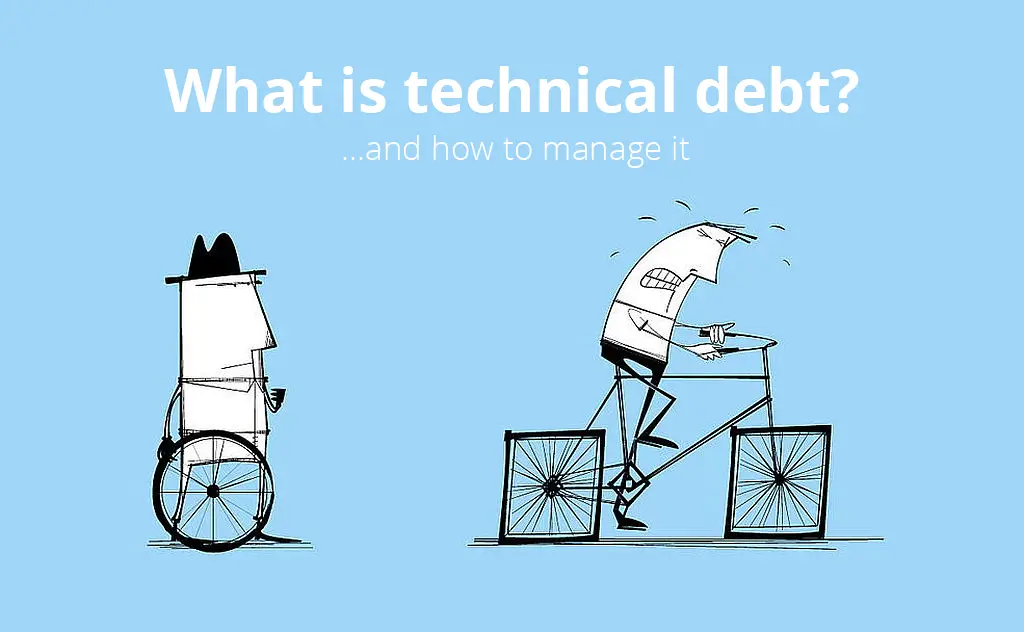Technical Debt Detours: Navigating and Paying Off Tech Debt

Technical debt is an inevitable reality in software development, often arising due to time constraints, resource limitations, or misguided architectural decisions. While it can provide a temporary solution to pressing concerns, accumulating technical debt without addressing it can significantly impact the long-term health and sustainability of a software system.

Paying off technical debt is crucial for maintaining a healthy codebase and preventing future development challenges. However, the process requires a structured approach and careful consideration to minimize disruption and ensure efficient progress.

Navigating Technical Debt
- Identify and Prioritize: Determine the severity of different technical debt items and their potential impact on the system. Prioritize those that require immediate attention to prevent further degradation.
- Map to Business Value: Analyze the business value of addressing technical debt. Quantify the benefits it will bring, such as improved maintainability, performance, and reliability.
- Establish a Remediation Plan: Create a detailed plan outlining the steps required to refactor, rewrite, or redesign the affected code. Include estimated timelines, required resources, and potential risks.
Paying Off Technical Debt
- Incorporate into Sprints: Schedule technical debt reduction tasks alongside regular development work, allocating appropriate time and resources.
- Employ Agile Techniques: Use techniques like test-driven development, continuous integration, and pair programming to ensure code quality and minimize the introduction of new technical debt.
- Educate and Empower Teams: Foster a culture where developers understand the importance of technical debt and are empowered to address it proactively.
- Conduct Regular Audits: Establish a regular schedule for code reviews and audits to identify and address potential technical debt early on.
- Seek External Support: If necessary, engage external consultants or specialists to provide expertise in refactoring and improving codebase architecture.
Paying off technical debt requires consistent effort and a long-term perspective. It is not a one-time fix but rather an ongoing process. By adopting a proactive approach and incorporating technical debt reduction into your development practices, you can ensure the long-term health, sustainability, and scalability of your software systems.# Technical Debt Detours: Navigating And Paying Off Tech Debt
Executive Summary
Technical debt is a metaphor used to describe the extra development work that arises when software development teams take shortcuts or make compromises to meet deadlines. While it may seem like a quick fix in the short term, technical debt can accumulate over time and lead to significant problems down the road. This article will delve into the concept of technical debt, its potential consequences, and strategies for effectively navigating and paying it off.
Introduction
In the fast-paced world of software development, the pressure to deliver results quickly can often lead to the accumulation of technical debt. This debt can manifest in various forms, from poorly written code to inadequate testing or documentation. While it may seem like a minor inconvenience at first, technical debt can have a snowball effect, ultimately compromising the stability, performance, and maintainability of software systems.
FAQs
1. What are the signs of technical debt?
- Increasing defect rates
- Declining code quality
- Frequent system outages
- Slow development velocity
2. What are the consequences of ignoring technical debt?
- Increased maintenance costs
- Reduced system reliability
- Security vulnerabilities
- Wasted time and resources
3. Is technical debt always bad?
No, not all technical debt is inherently negative. It can be necessary to take on some debt to deliver a working product quickly. However, it’s crucial to manage debt effectively and avoid letting it spiral out of control.
Top 5 Subtopics
Understanding the Different Types of Technical Debt
4. Code Debt: Refers to poorly written or structured code that makes maintenance and updates difficult.
5. Architecture Debt: Occurs when the system’s architecture is inadequate or inflexible, hindering future enhancements.
6. Test Debt: Arises from insufficient testing, leading to defects and reduced confidence in the system’s reliability.
The Impact of Technical Debt on Software Development
7. Reduced Velocity: Technical debt can slow down development as developers spend more time fixing defects and refactoring code.
8. Increased Costs: Debt accumulates over time, resulting in higher maintenance and rework costs.
9. Security Risks: Poorly written code and inadequate testing can create security vulnerabilities, exposing the system to threats.
Strategies for Managing Technical Debt
10. Prioritize Debt Repayment: Identify and prioritize the most critical technical debt that needs to be addressed.
11. Integrate Refactoring into Sprints: Dedicate time in development sprints for refactoring and paying down technical debt.
12. Automate Testing: Utilize automated testing tools to reduce test debt and improve code quality.
Communicating Technical Debt to Stakeholders
13. Quantify the Impact: Assess the potential costs and risks associated with technical debt and present it to stakeholders in a clear and concise manner.
14. Advocate for Realistic Deadlines: Set realistic delivery timelines that allow for proper code design, testing, and documentation.
15. Build a Culture of Quality: Foster a development culture that emphasizes code quality and minimizes technical debt accumulation.
Conclusion
Technical debt is an inevitable part of software development, but it’s essential to understand its potential consequences and develop effective strategies for managing and paying it off. By prioritizing debt repayment, integrating refactoring into development cycles, automating testing, and fostering a culture of quality, organizations can avoid the pitfalls of technical debt and ensure the long-term health and success of their software systems.
Relevant Keyword Tags:
- Technical debt
- Software development
- Code quality
- Debt repayment
- Software maintenance

